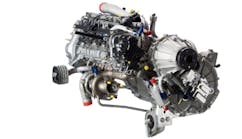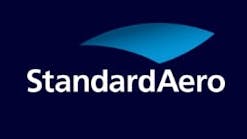Safran and AECC Introduce the WZ16, the First Jointly-Developed Aero Engine to be Certified in China
Safran Helicopter Engines and Aero Engine Corporation of China (AECC) announce the issue of the Type Certificate for the WZ16 turboshaft from the Civil Aviation Administration of China (CAAC). Installed in the AVIC AC352 helicopter, the WZ16 is the first jointly-developed aero engine to be entirely certified by Chinese authorities. Also known as the Ardiden 3C, the WZ16 has been jointly developed and built by Safran Helicopter Engines, with Harbin Dongan Engine and Hunan Aerospace Propulsion Research Institute (HAPRI), both parts of the AECC consortium. The Ardiden 3C was certified by EASA in April 2018.
“Certification from Chinese authorities marks a major milestone for Safran Helicopter Engines and AECC” commented Bruno Bellanger, Safran Helicopter Engines EVP Programs. “It confirms that the WZ16 is now ready to operate in accordance with world-class Chinese safety and performance standards, thanks to an intensive maturation plan conducted by our partners. It is also a historic moment for the Chinese aerospace industry as it is the first-ever jointly-developed aero engine to be entirely CAAC certified, and a major step toward AC352 entry-into-service”.
Harbin Dongan Engine, the Type Certificate holder said, "The Type Certificate from CAAC is a further step towards the commercial success of the WZ16. It is thanks to the close cooperation of AECC, Harbin Dongan Engine, HAPRI and Safran Helicopter Engines, as well as to the strong support of CAAC. In the future, we will not only expand our engine portfolio but work hand-in-hand with Safran Helicopter Engines, to provide continuous airworthiness and after-sales service of the WZ16, ensuring smooth operation and world-class after-sales service for our clients. Thus, they can buy it confidently and use it safely.”
The WZ16/Ardiden 3C is a new-generation turboshaft in the 1,700-2,000 shp range. The Ardiden 3 family has completed over 10,000 hours of tests, confirming high levels of design maturity and competitive operating and maintenance costs. It features a remarkably compact modular architecture, a best-in-class power-to-weight ratio and low cost-of-ownership. It also delivers at least 10 % better fuel consumption than engines operating in the same power range.





